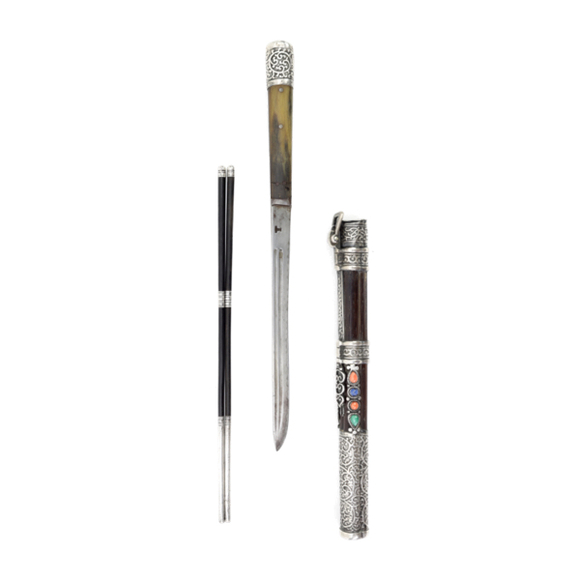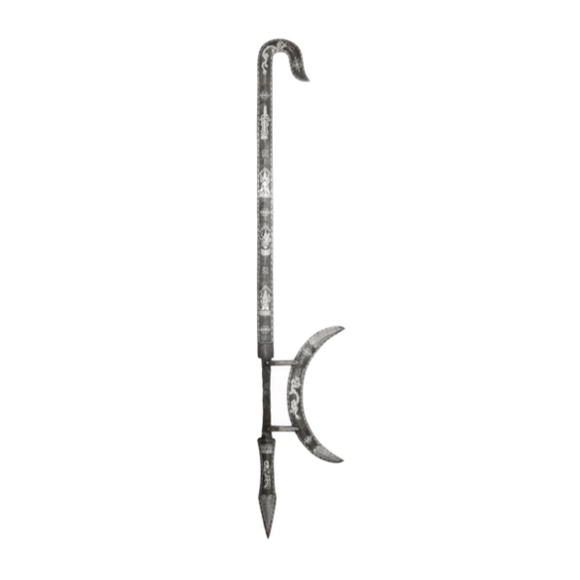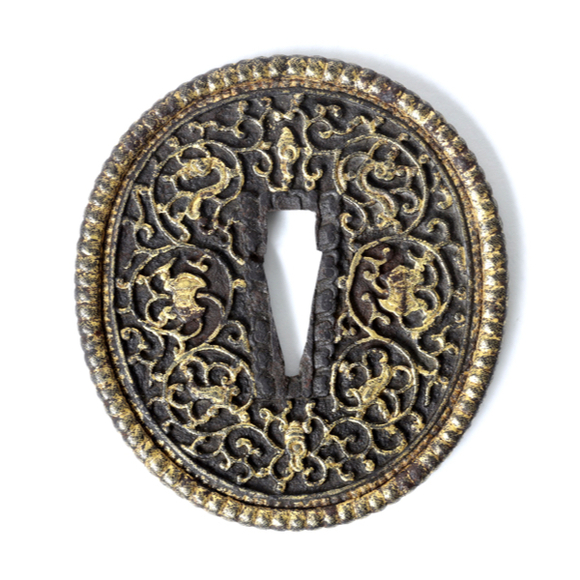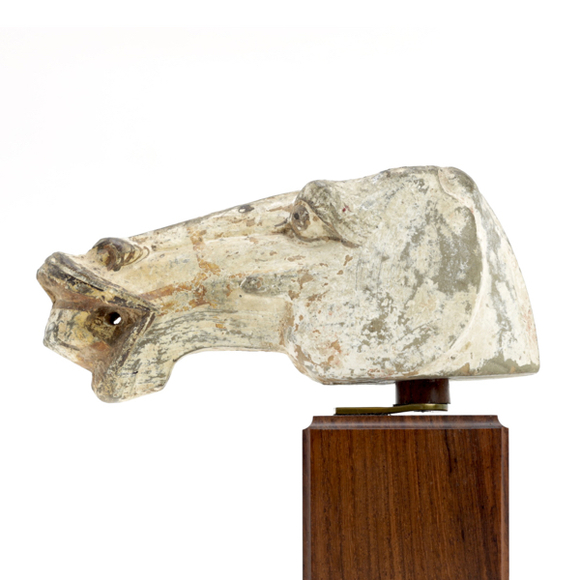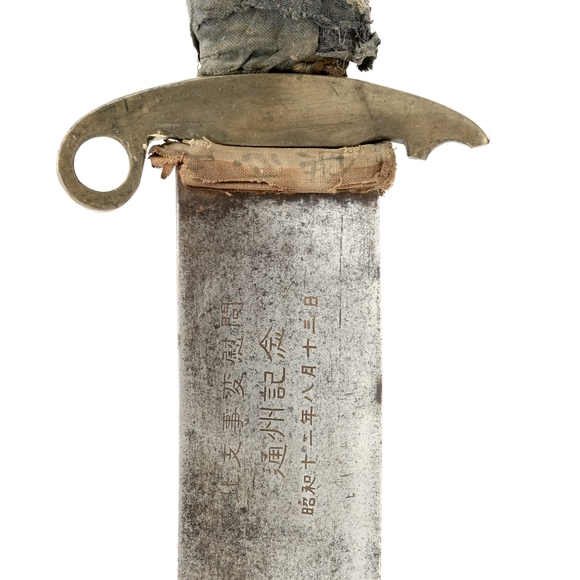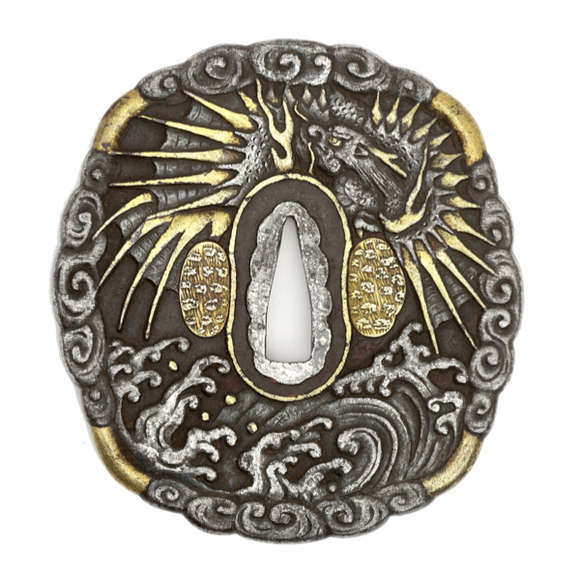Language: Mandarin Chinese
Source: Classical literature
Description
Tūnkǒu (吞口) literally means "swallowing mouth".1 It is the name of a collar found on the base of saber and pole-arm blades, and on rarer occasions on Chinese straightsword blades.
On pole-arms, the tūnkǒu takes the form of a stylized dragon, Yázì (睚眦), one of the nine sons of the dragon and the most ferocious of them all.

A Yázì tūnkǒu on a 19th century pūdāo from southern China.
Sold by Mandarin Mansion in 2021.

Dragon tūnkǒu on a yǎnyuèdāo (掩月刀).
Woodblock from the Wujing Zongyao (武經總要) or "Complete Essentials for the Military Classics".
Ming reprint of the original that was compiled between 1040-1044 A.D.
On swords and saber blades
On swords and sabers, the tūnkǒu is a collar piece that helps secure the guard and ensures a tight fit in the scabbard. In some cases, the outline of the tūnkǒu is merely chiseled from the base of the blade itself.
Unlike the Japanese habaki which serves a similar function, the Chinese tūnkǒu as commonly found on sabers derived off the sabers used by people of the steppe. The feature was probably introduced into China by the Mongols.2 The name then probably just crossed over from the name of the pole-arm tūnkǒu.
For a complete overview of saber parts, see: A Chinese saber glossary.

One of the earliest known examples of such a collar on a Eurasian steppe saber, 10th-13th century.
Metropolitan Museum accession number 2000.609.


A tūnkǒu on a Chinese saber.
 A tūnkǒu on a 17th century saber that is chiseled from the base of the blade.
A tūnkǒu on a 17th century saber that is chiseled from the base of the blade.
References
1. Tongwen Guanghui Quanshu (同文廣彙全書) or "Enlarged and complete dictionary" of 1702. A Qing imperial dictionary in Chinese and Manchu, each entry double checked and approved by the Kangxi emperor.
2. Philip M.W. Tom; Some notable sabers of the Qing dynasty in the Metropolitan Museum of Arts. Metropolitan Museum Journal 36, 2001.

